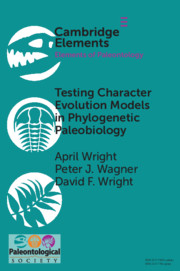Element contents
Testing Character Evolution Models in Phylogenetic Paleobiology
Published online by Cambridge University Press: 01 July 2021
Summary
Information
- Type
- Element
- Information
- Series: Elements of PaleontologyOnline ISBN: 9781009049016Publisher: Cambridge University PressPrint publication: 26 August 2021
